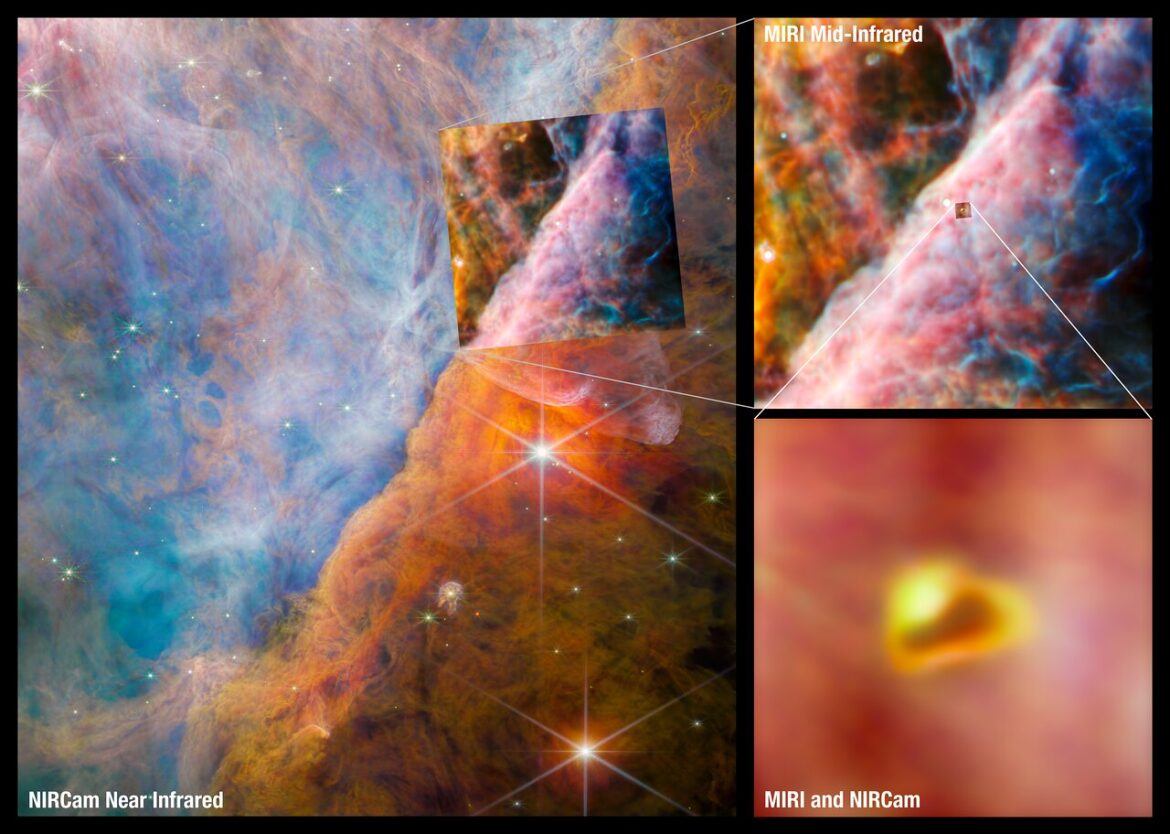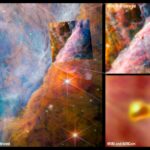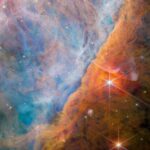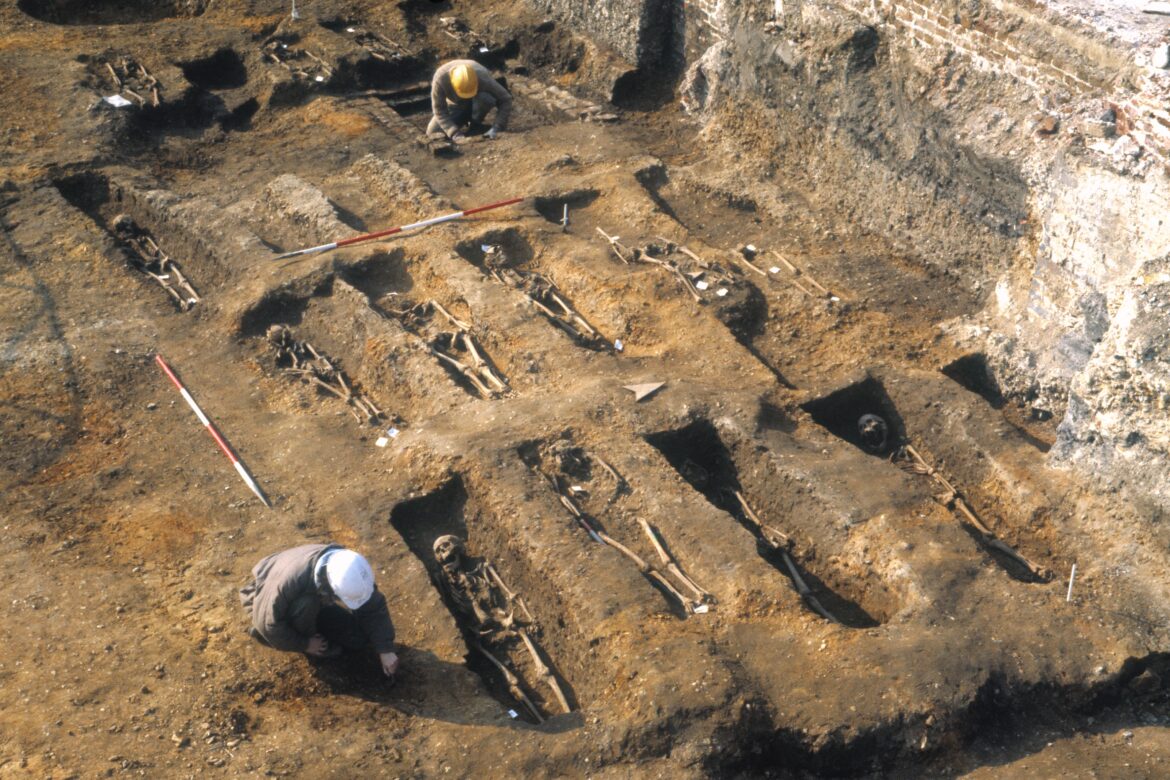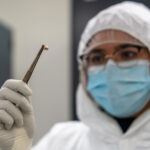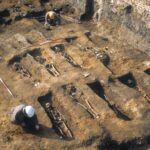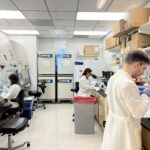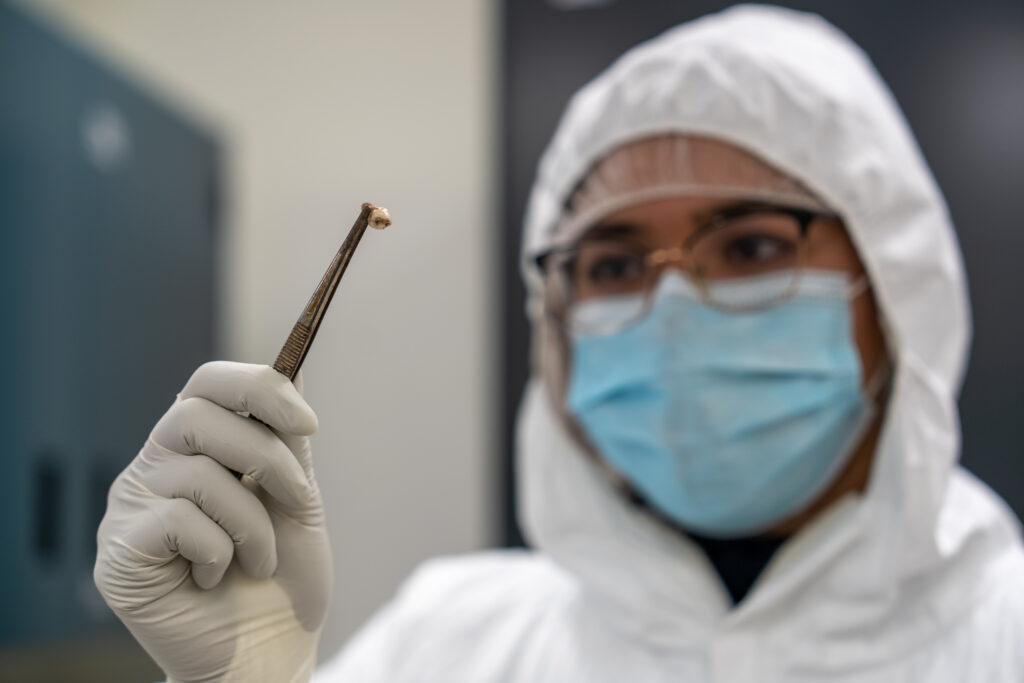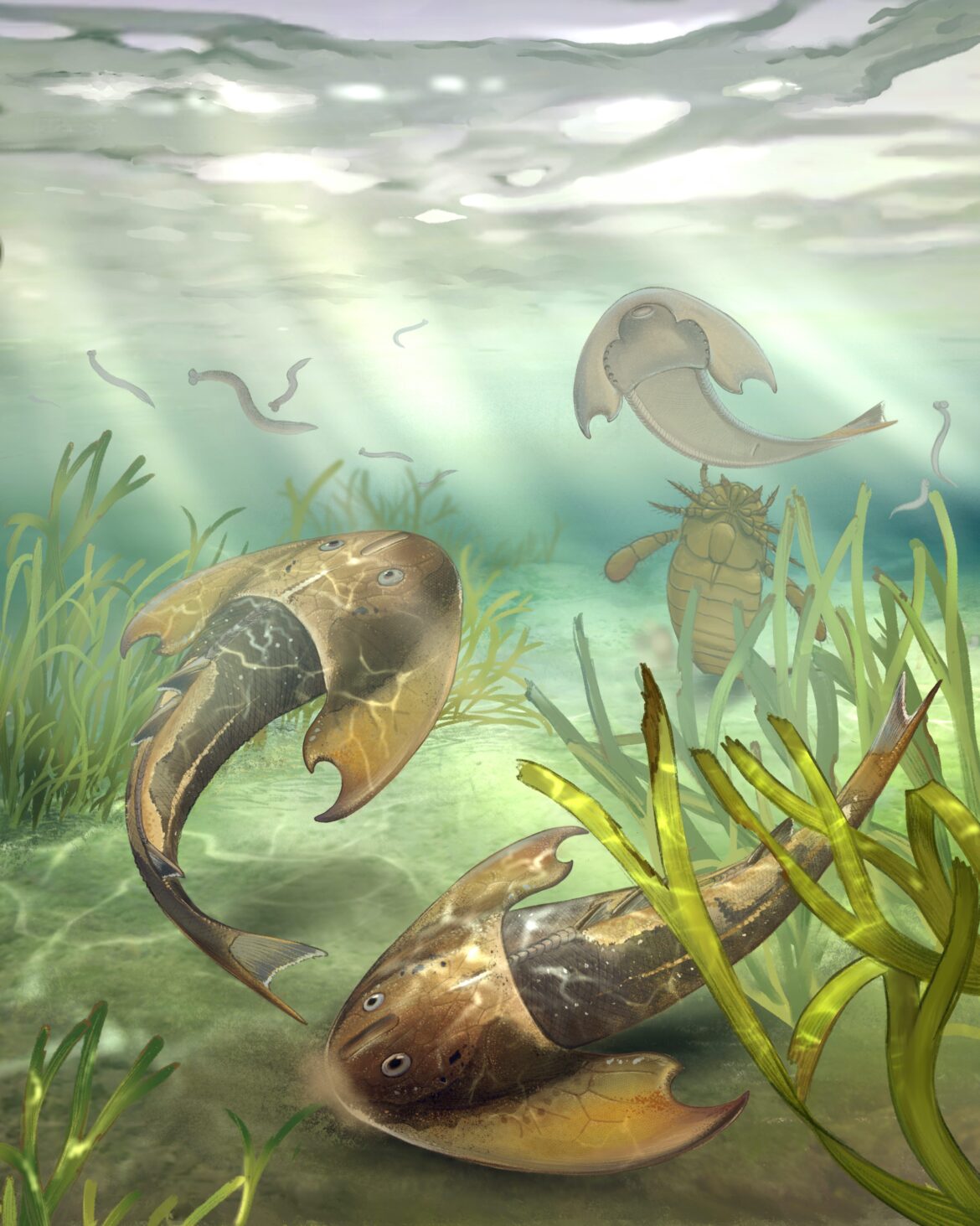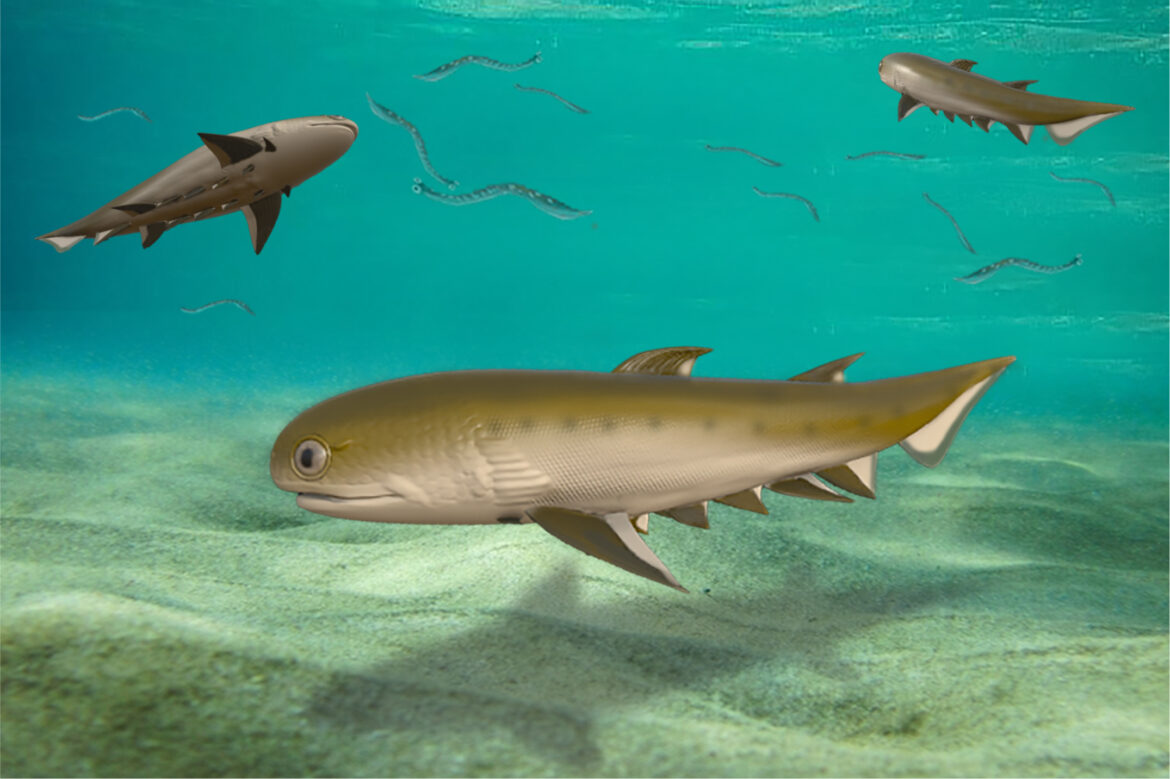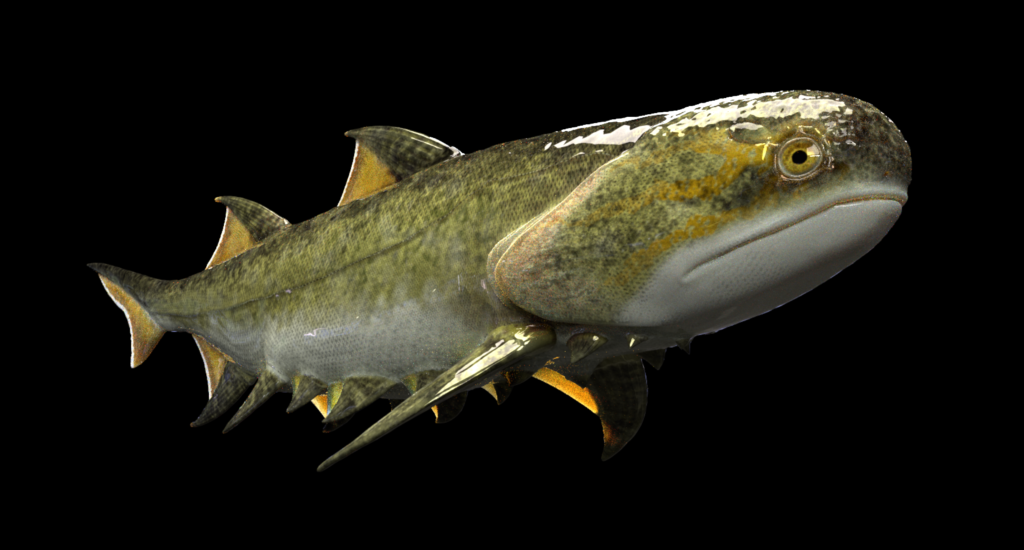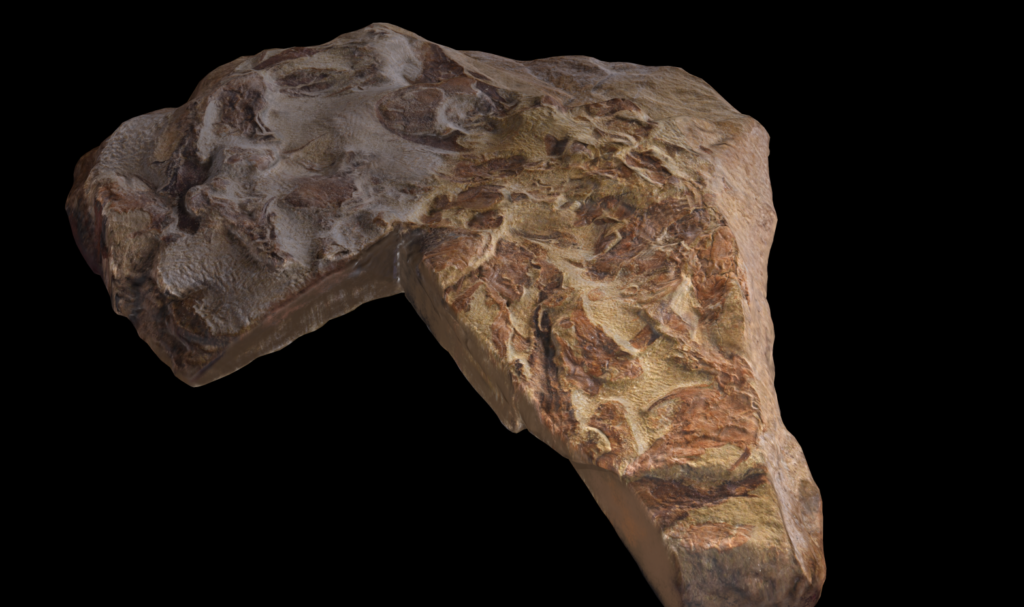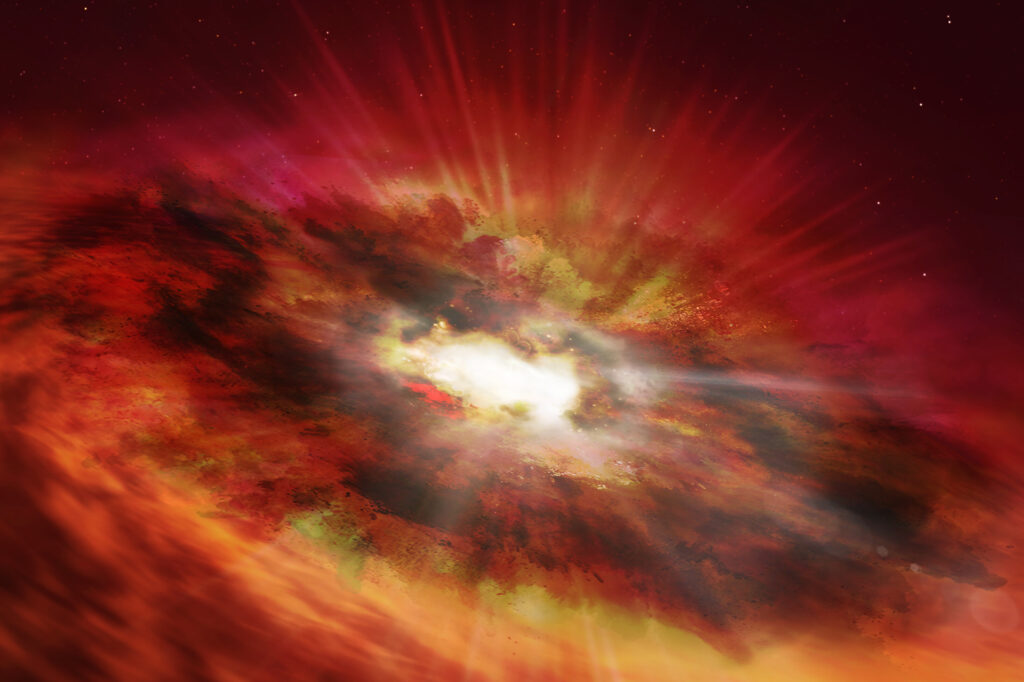Webb sees carbon-rich dust grains at redshift, in the first billion years of cosmic time
For the first time, the NASA/ESA/CSA James Webb Space Telescope has observed the chemical signature of carbon-rich dust grains at redshift ~ 7 [1], which is roughly equivalent to one billion years after the birth of the Universe [2]. Similar observational signatures have been observed in the much more recent Universe, attributed to complex, carbon-based molecules known as polycyclic aromatic hydrocarbons (PAHs). It is not thought likely, however, that PAHs would have developed within the first billion years of cosmic time. Therefore, this observation suggests the exciting possibility that Webb may have observed a different species of carbon-based molecule: possibly minuscule graphite- or diamond-like grains produced by the earliest stars or supernovae. This observation suggests exciting avenues of investigation into both the production of cosmic dust and the earliest stellar populations in our Universe, and was made possible by Webb’s unprecedented sensitivity.

This galaxy, along with others in this region, were part of a Webb study by an international team of astronomers, who observed the chemical signature of carbon-rich dust grains at redshift ~7. This is roughly equivalent to one billion years after the birth of the Universe. Similar observational signatures have been observed in the much more recent Universe, attributed to complex, carbon-based molecules known as polycyclic aromatic hydrocarbons (PAHs). It is not thought likely, however, that PAHs would have developed within the first billion years of cosmic time. Therefore, this observation suggests the exciting possibility that Webb may have observed a different species of carbon-based molecule: possibly minuscule graphite- or diamond-like grains produced by the earliest stars or supernovae. This observation suggests exciting avenues of investigation into both the production of cosmic dust and the earliest stellar populations in our Universe, and was made possible by Webb’s unprecedented sensitivity.
The team’s research indicates that this particular galaxy showed significant dust obscuration and has undergone substantial metal enrichment relative to galaxies with similar mass at the same redshift. The team also believes the galaxy’s visible colour gradient may indicate a peculiar geometrical alignment of stars and dust.
In this image, blue, green, and red were assigned to Webb’s NIRCam (Near-Infrared Camera) data at 0.9, 1.15, and 1.5 microns; 2.0, 2.77, and 3.55 microns; and 3.56, 4.1, and 4.44 microns (F090W, F115W, and F150W; F200W, F277W, and F335M; and F356W, F410M, and F444W), respectively.
The galaxy is shown zoomed in on a region measuring roughly 1×1 arcseconds, which is a measure of angular distance on the sky. One arcsecond is equal to 1/3600 of one degree of arc (the full Moon has an angular diameter of about 0.5 degrees). The actual size of an object that covers one arcsecond on the sky depends on its distance from the telescope.
Credit:
ESA/Webb, NASA, ESA, CSA, B. Robertson (UC Santa Cruz), B. Johnson (Center for Astrophysics, Harvard & Smithsonian), S. Tacchella (University of Cambridge, M. Rieke (Univ. of Arizona), D. Eisenstein (Center for Astrophysics, Harvard & Smithsonian), A. Pagan (STScI)
The seemingly empty spaces in our Universe are in reality often not empty at all, but occupied by clouds of gas and cosmic dust. This dust consists of grains of various sizes and compositions that are formed and ejected into space in a variety of ways, including by supernova events. This material is crucial to the evolution of the Universe, as dust clouds ultimately form the birthplaces for new stars and planets. However, it can also be a hindrance to astronomers: the dust absorbs stellar light at certain wavelengths, making some regions of space very challenging to observe. An upside, however, is that certain molecules will very consistently absorb or otherwise interact with specific wavelengths of light. This means that astronomers can acquire information about the cosmic dust’s composition by observing the wavelengths of light that it blocks. An international team of astronomers used this technique, combined with Webb’s extraordinary sensitivity, to detect the presence of carbon-rich dust grains only a billion years after the birth of the Universe.
Joris Witstok of the University of Cambridge, the lead author of this work, elaborates: “Carbon-rich dust grains can be particularly efficient at absorbing ultraviolet light with a wavelength around 217.5 nanometres, which for the first time we have directly observed in the spectra of very early galaxies.”
This prominent 217.5-nanometre feature has previously been observed in the much more recent and local Universe, both within our own Milky Way galaxy, and in galaxies up to redshift ~ 3 [1]. It has been attributed to two different types of carbon-based species: polycyclic aromatic hydrocarbons (PAHs) or nano-sized graphitic grains. PAHs are complex molecules, and modern models predict that it should take several hundreds of millions of years before they form. It would be surprising, therefore, if the team had observed the chemical signature of a mixture of dust grains that include species that were unlikely to have formed yet. However, according to the science team, this result is the earliest and most distant direct signature for this particular type of carbon-rich dust grain.
The answer may lie in the details of what was observed. As already stated, the feature associated with the cosmic dust mixture of PAHs and tiny graphitic grains is at 217.5 nanometres. However, the feature observed by the team actually peaked at 226.3 nanometres. A nanometre is a millionth of a millimetre, and this discrepancy of less than ten nanometres could be accounted for by measurement error [3]. Equally, it could also indicate a difference in the composition of the early-Universe cosmic dust mixture that the team detected.
“This slight shift in wavelength of where the absorption is strongest suggests we may be seeing a different mix of grains, for example graphite- or diamond-like grains,” adds Witstok. “This could also potentially be produced on short timescales by Wolf-Rayet stars or supernova ejecta.”
The detection of this feature in the early Universe is surprising, and allows astronomers to postulate about the mechanisms that could create such a mix of dust grains. This involves drawing on existing knowledge from observations and models. Witstok suggests diamond grains formed in supernova ejecta because models have previously suggested that nano-diamonds could be formed this way. Wolf-Rayet stars are suggested because they are exceptionally hot towards the end of their lives, and very hot stars tend to live fast and die young; giving enough time for generations of stars to have been born, lived, and died, to distribute carbon-rich grains into the surrounding cosmic dust in under a billion years. Models have also shown that carbon-rich grains can be produced by certain types of Wolf-Rayet stars, and just as importantly that those grains can survive the violent deaths of those stars. However, it is still a challenge to fully explain these results with the existing understanding of the early formation of cosmic dust. These results will therefore go on to inform the development of improved models and future observations.
Before Webb, the observations of multiple galaxies had to be combined in order to get signals strong enough to make deductions about the stellar populations in the galaxies, and to learn about how their light was affected by dust absorption. Importantly, astronomers were restricted to studying relatively old and mature galaxies that had had a long time to form stars as well as dust. This limited their ability to really pin down the key sources of cosmic dust. With the advent of Webb, astronomers are now able to make very detailed observations of the light from individual dwarf galaxies, seen in the first billion years of cosmic time. Webb finally permits the study of the origin of cosmic dust and its role in the crucial first stages of galaxy evolution.
“This discovery was made possible by the unparalleled sensitivity improvement in near-infrared spectroscopy provided by Webb, and specifically its Near-Infrared Spectrograph (NIRSpec),” noted team member Roberto Maiolino of the University of Cambridge and University College London. “The increase in sensitivity provided by Webb is equivalent, in the visibile, to instantaneously upgrading Galileo’s 37-millimetre telescope to the 8-metre Very Large Telescope (one of the most powerful modern optical telescopes).”
NIRSpec was built for the European Space Agency by a consortium of European companies led by Airbus Defence and Space (ADS) with NASA’s Goddard Space Flight Centre providing its detector and micro-shutter subsystems. The primary goal of NIRSpec is to enable large spectroscopic surveys of astronomical objects such as stars or distant galaxies. This is made possible by its powerful multi-object spectroscopy mode, which makes use of microshutters. This mode is capable of obtaining spectra of up to nearly 200 objects simultaneously, over a 3.6 × 3.4 arcminute field of view — the first time this capability has been provided from space. This mode makes for very efficient use of Webb’s valuable observing time.
The team is also planning further research into the data and this result.
“We are planning to work further with theorists who model dust production and growth in galaxies,” shares team member Irene Shivaei of the University of Arizona/Centro de Astrobiología (CAB). “This will shed light on the origin of dust and heavy elements in the early Universe.”
These observations were made as part of the JWST Advanced Deep Extragalactic Survey, or JADES, which devoted about 32 days of telescope time to uncovering and characterising faint, distant galaxies. This programme has facilitated the discovery of hundreds of galaxies that existed when the Universe was less than 600 million years old, including some of the farthest galaxies known to date. The sheer number and maturity of these galaxies was far beyond predictions from observations made before Webb’s launch. This new result of early-Universe dust grains contributes to our growing and evolving understanding of the evolution of stellar populations and galaxies during the first billion years of cosmic time.
“This discovery implies that infant galaxies in the early Universe develop much faster than we ever anticipated,” adds team member Renske Smit of the Liverpool John Moores University in the United Kingdom. “Webb shows us a complexity of the earliest birth-places of stars (and planets) that models are yet to explain.“
The results have been published today in Nature.

This region was the focus area of Webb study for an international team of astronomers, who observed the chemical signature of carbon-rich dust grains at redshift ~7. This is roughly equivalent to one billion years after the birth of the Universe. Similar observational signatures have been observed in the much more recent Universe, attributed to complex, carbon-based molecules known as polycyclic aromatic hydrocarbons (PAHs). It is not thought likely, however, that PAHs would have developed within the first billion years of cosmic time. Therefore, this observation suggests the exciting possibility that Webb may have observed a different species of carbon-based molecule: possibly minuscule graphite- or diamond-like grains produced by the earliest stars or supernovae. This observation suggests exciting avenues of investigation into both the production of cosmic dust and the earliest stellar populations in our Universe, and was made possible by Webb’s unprecedented sensitivity.
In this image, blue, green, and red were assigned to Webb’s NIRCam (Near-Infrared Camera) data at 0.9, 1.15, and 1.5 microns; 2.0, 2.77, and 3.55 microns; and 3.56, 4.1, and 4.44 microns (F090W, F115W, and F150W; F200W, F277W, and F335M; and F356W, F410M, and F444W), respectively.
Credit:
ESA/Webb, NASA, ESA, CSA, B. Robertson (UC Santa Cruz), B. Johnson (Center for Astrophysics, Harvard & Smithsonian), S. Tacchella (University of Cambridge, M. Rieke (Univ. of Arizona), D. Eisenstein (Center for Astrophysics, Harvard & Smithsonian), A. Pagan (STScI)
Notes
[1] The Universe is expanding. The expansion is taking place at the fundamental spacetime level, which means that light travelling through the Universe is ‘stretched’ as the Universe expands. The earlier in the Universe the light originated, the more it will have been stretched by now. Practically speaking, this stretching of light means its wavelength becomes longer. This effect is known as cosmological redshift, because the colour red has the longest wavelength of all light visible to human eyes. Because of this, cosmological time is often not measured in years, but is indicated by the redshift of the observed light. The very local Universe — where the light we observe was emitted recently and has not been notably redshifted — has a low redshift. Conversely, redshift 7 corresponds to light that was emitted about 13 billion years ago, in the very early Universe.
[2] Astronomy fundamentally involves the study of light, and light travels at a finite speed (roughly 300 million kilometres per second). Objects can only be observed by humans once light from them has reached Earth. Whilst in some ways providing a limitation, this also provides a direct opportunity to study the early as well as the present Universe. Studying light from the early Universe necessarily entails the observation of regions very distant from Earth from which it takes a huge amount of time for light to travel to us. Thus, probing these early cosmological times (or high redshifts) requires very sensitive telescopes.
[3] All scientific measurements — including those from observations and those predicted by models — will have an associated error. This is because there will always be sources of uncertainty. If a measurement falls within the bounds of the expected error, it means that it could still be accurate: in this context, that means the 226.3 nanometre feature could still account for the same mix of cosmic dust as that represented by the 217.5 nanometre feature.
Press release from ESA Webb





